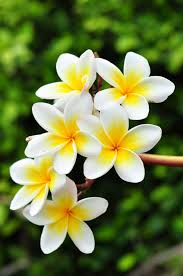**History and Origin of Porcelain Flowers**
 Porcelain flowers, often referred to as “hoa sứ” in Vietnamese, hold a rich history and cultural significance that spans centuries. Originating from the ancient traditions of East Asia, particularly China, porcelain flowers have evolved into cherished symbols of beauty and artistry.
Porcelain flowers, often referred to as “hoa sứ” in Vietnamese, hold a rich history and cultural significance that spans centuries. Originating from the ancient traditions of East Asia, particularly China, porcelain flowers have evolved into cherished symbols of beauty and artistry.
The history of porcelain itself is deeply intertwined with the development of civilization in China. Dating back to the Eastern Han Dynasty (25-220 AD), the Chinese mastered the art of creating delicate ceramic objects using kaolin clay fired at high temperatures. This marked the birth of what would later be recognized as porcelain, renowned for its translucency, strength, and smooth texture.
As Chinese porcelain gained popularity and recognition, artisans began experimenting with crafting intricate floral designs. These delicate blooms, meticulously shaped and painted by skilled hands, soon became prized possessions sought after by royalty and aristocrats.
During the Tang Dynasty (618-907 AD), porcelain production flourished, and the art of porcelain flower-making reached new heights of sophistication. Artisans perfected techniques for shaping petals, leaves, and stems, creating lifelike replicas of various flowers found in nature.
The Song Dynasty (960-1279 AD) witnessed further advancements in porcelain craftsmanship, with artisans refining glazing methods and decorative techniques. Porcelain flowers adorned imperial palaces, temples, and elite households, symbolizing wealth, refinement, and cultural sophistication.
The Ming Dynasty (1368-1644 AD) marked a golden age for porcelain production, characterized by exquisite designs and technical innovation. Porcelain flowers became prized exports, spreading Chinese artistic influence to distant shores and inspiring local adaptations in neighboring regions.
Beyond China, porcelain flowers also found favor in other East Asian cultures, including Japan, Korea, and Vietnam. Each culture infused its unique artistic sensibilities and symbolism into the craft, resulting in diverse interpretations of porcelain floral motifs.
In Vietnam, the tradition of porcelain flower-making has its roots in the country’s rich ceramic heritage. Influenced by Chinese artistic traditions, Vietnamese artisans embraced porcelain flower-making as both a decorative art form and a spiritual practice.
Today, porcelain flowers continue to captivate admirers worldwide, serving as timeless reminders of craftsmanship, beauty, and cultural heritage. Whether displayed as decorative ornaments or cherished heirlooms, these delicate blooms embody the enduring legacy of an ancient artistic tradition.
**The Art of Porcelain Flower Crafting**
Porcelain flowers, known for their exquisite beauty and intricate craftsmanship, are the result of a meticulous artistic process that requires skill, precision, and creativity. From shaping delicate petals to painting intricate details, the art of porcelain flower crafting is a time-honored tradition passed down through generations.
The process begins with the selection of high-quality porcelain clay, known for its purity and plasticity. Artisans carefully knead and shape the clay into various components, such as petals, leaves, and stems, using specialized tools to achieve lifelike textures and forms.
Once shaped, the porcelain components are left to dry before undergoing the first firing process. This initial firing, known as the bisque firing, hardens the clay and prepares it for the delicate process of painting and glazing.
Painting porcelain flowers requires a steady hand and a keen eye for detail. Using fine brushes and mineral-based pigments, artisans meticulously apply layers of color to each component, striving to capture the natural hues and gradients of real flowers.
After painting, the porcelain components are glazed to enhance their luster and durability. Glazing also adds depth and dimension to the colors, creating a vibrant and lifelike appearance reminiscent of fresh blooms.
Once glazed, the porcelain components undergo a final firing at high temperatures, ensuring the permanence of the colors and the strength of the finished pieces. This firing process is crucial to the longevity and quality of porcelain flowers, allowing them to withstand the test of time without losing their beauty or integrity.
Throughout history, various techniques and styles of porcelain flower crafting have emerged, each reflecting the cultural influences and artistic sensibilities of their respective regions. From the delicate cherry blossoms of Japan to the intricate lotus flowers of Vietnam, porcelain flowers embody the diversity and richness of global artistic traditions.
In addition to their decorative appeal, porcelain flowers also hold symbolic significance in many cultures. In Chinese tradition, certain flowers are associated with auspicious meanings and are often used to convey messages of love, luck, and prosperity. Similarly, in Vietnamese culture, porcelain flowers are cherished for their aesthetic beauty and spiritual symbolism, often used in rituals and ceremonies to honor ancestors and celebrate special occasions.
In today’s fast-paced world, the art of porcelain flower crafting continues to thrive, thanks to the dedication and passion of skilled artisans who uphold this ancient tradition. Whether displayed as exquisite decorations or cherished as meaningful gifts, porcelain flowers serve as enduring symbols of beauty, craftsmanship, and cultural heritage.

